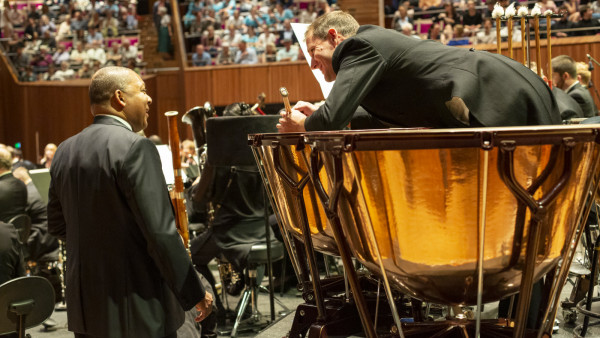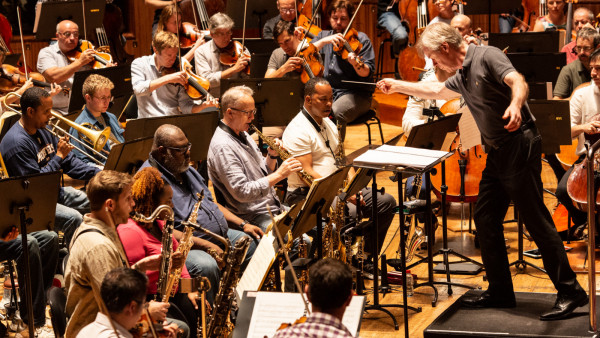Marsalis and the SSO unleash New York’s manic energy
Two visions of New York about 100 years apart provided the springboards for music of unbounded energy in this joint program by the SSO and the Jazz at Lincoln Center Orchestra directed and managed by legendary jazz and classical trumpeter Wynton Marsalis.
Through a quirk of historical neglect, the SSO has never previously performed Edgard Varese’s remarkable orchestral work Ameriques, which he began shortly after arriving in New York in 1915 with, according biographer Fernand Ouellette, $90 and two words of English.
The work starts with an alto flute and harps, an apparent nod to Debussy, though the rhythmic block-like structures that follow quickly establish Stravinsky as a key influence. With siren and a large battery of percussion and orchestra of about 100 (this was the composer’s “cut down” 1929 version), the work develops gestures that increasingly surge forward in jarring juxtaposition, rarely coalescing except finally in a wild exultant close.
Wynton Marsalis’s The Jungle (Symphony No. 4) is an affectionate and cautionary portrait of New York in six movements. The first movement, The Big Scream, used metallic sounds and rhythmic blocks in a way not unlike Varese initially, but the later movements increasingly drew on the rich range of saxophone, brass, piano and drum sounds and inspiring improvisational talents of the superb Jazz at Lincoln Center Orchestra.
The second movement, The Big Show, was a slow raunch, while the third moved from oboe solo in jazz style to a folk-song like fugue. After haunting lonely solos on saxophone and a suave fifth movement, the last movement hinted at digital apocalypse with menacing mechanical momentum.
Natalie Clein and Katya Apekisheva’s recital for Musica Viva included welcome exploration of some neglected repertoire by Vaughan Williams (six Studies in English Folk-Song), Ernest Bloch and Rebecca Clarke and a new work by Natalie Williams, The Dreaming Land commissioned by Dr Catherine Brown-Watt.
The first movement of Williams’ work, Voice of the Ancients projected a quiet cello melody over static chord on the piano, while the second started primevally in the cello’s depths rising over the course of the piece against widely spaced piano chords. The third contained the only music of vigour in the piece, building up momentum to which Clein and Apekisheva brought elan and excitement.
They projected the structure of Clarke’s Sonata (1919, and originally for viola) with clarity and spirit in the first movement, quicksilver virtuosity in the second and reflective cogency in the third. The concert’s finest playing came in the deeply idiomatic expressiveness of Bloch’s From Jewish Life which, with the same composer’s Suite No. 1 for Solo Cello, framed Clarke’s piece. Beethoven’s remarkably compressed and structurally exploratory Sonata in C major opus 102, No. 1 concluded.
By Peter McCallum
Source: Brisbane Times


